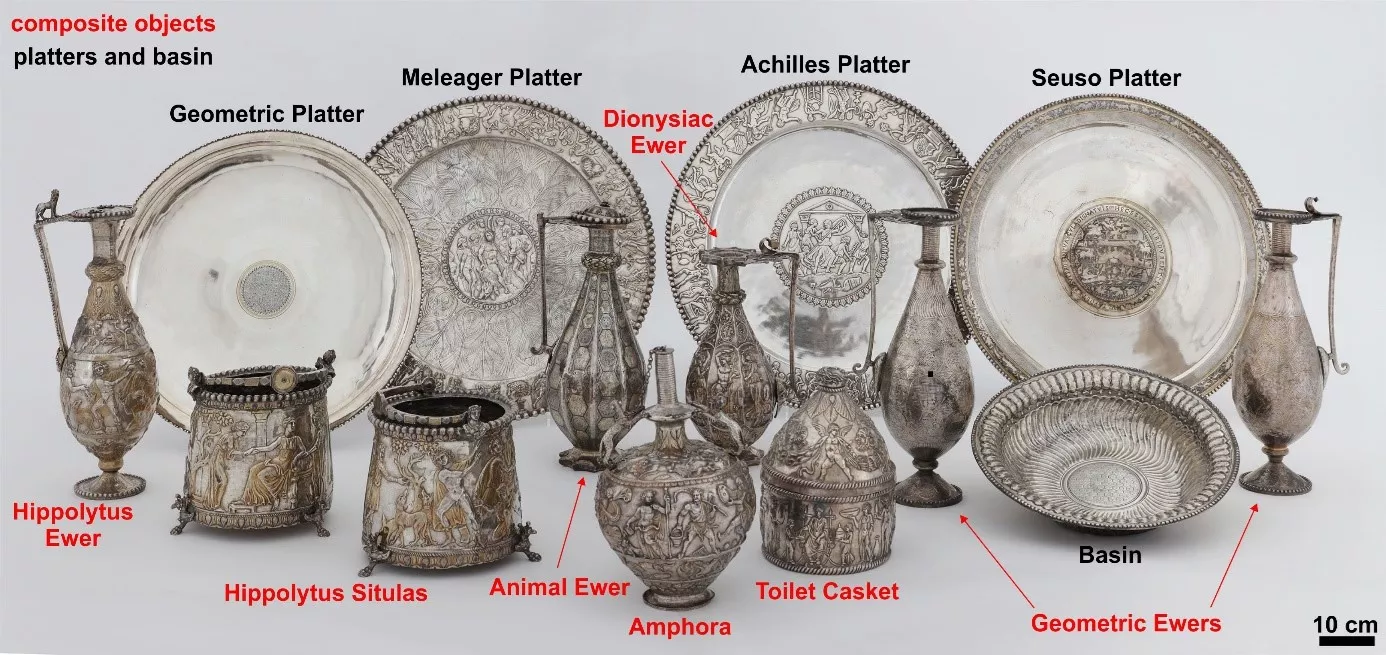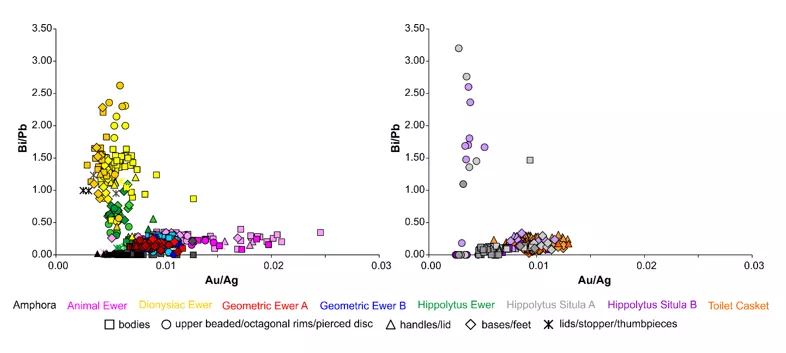The latest results of the non-destructive archaeometric study of the Seuso Treasure, one of the most important late Roman treasure finds, have been published in one of the leading journals in the field of archaeometry and archaeology. The research that attracted considerable interest from the public was performed within the framework of the Seuso Research Project, and was coordinated by the Hungarian National Museum, the Museum of Fine Arts and the ELKH Research Centre for Astronomy and Earth Sciences (CSFK), Institute for Geological and Geochemical Research.

The non-destructive analytical method using a handheld X-ray fluorescence spectrometer (hXRF), is increasingly prominent in the Hungarian archaeometric research. The advantage of the method is that no sampling and, in most cases, no sample preparation is required. Objects can therefore be analysed in situ in the museums or at the excavation sites. For the analysis of the Seuso objects, the hXRF instruments belonging to the ELKH CSFK Institute for Geological and Geochemical Research, and the ELKH Research Centre for Natural Sciences (TTK), Institute of Materials and Environmental Chemistry, were used. This allowed the performance of the two instruments from different manufacturers to be compared.
The Seuso objects were analysed along a pre-configured grid comprising several hundred points in contrast to previous studies on other late Roman silver objects. Such detailed studies had not previously been performed on late Roman treasure finds. The aim of the research was to determine the elemental composition of the late Roman Seuso Treasure silver vessels to classify the objects, to detect chemical differences between the objects, as well as chemical inhomogeneity within the objects, to determine the raw material (ore) used and to characterise the gilding and joining techniques.
The results from the four platters and basin were previously published in a Hungarian archaeometric journal, but the composite objects, which are the subject of this recently published paper, show a much more interesting picture. The results demonstrate that all the objects were made from high-quality silver. Copper was added intentionally to improve the mechanical properties of soft silver. Intentional alloying is indicated by the fact that those parts, which are mechanically more unstable (e.g. handles, bases), were constructed from a silver alloy with higher copper content. In contrast, those parts that were decorated with fine, detailed repoussé scenes (such as the bodies of the vessels), were manufactured from a silver alloy with lower copper content. The Bi/Pb ratio is a good geochemical indicator of the provenance of silver ingots from different sources. As well as the Bi/Pb ratio, the chemical composition suggests that the parts of the composite objects were manufactured from different silver ingots. The ewers were constructed in two ways: either the base and the body were made separately (i.e. the Hippolytus and Geometric Ewers), or the ewer was raised from a single silver sheet (i.e. the Dionysiac and Animal Ewers). The composite objects were assembled using three methods: mechanical attachment; low-temperature, lead-tin soft solders; or high-temperature, copper-silver hard solders. Additionally, two types of gilding were revealed by the XRF analysis, one with remnants of mercury, i.e. fire-gilding, and another type without remnants of mercury, presumably diffusion bonding.
These results contribute to a more detailed reconstruction of late Roman craftsmanship, including silversmithing, manufacturing, alloying, decoration and assembling practices. Furthermore, they can be used as a base for the planning of sampling sites for trace element and lead isotope analysis, which can contribute to the determination of the provenance of the used silver ores.


Publications:
Mozgai, V., Bajnóczi, B., May, Z., Mráv, Zs. (2021): Non-destructive handheld XRF study of archaeological composite silver objects – the case study of the late Roman Seuso Treasure. Archaeological and Anthropological Sciences 13(5):83.
Mozgai, V., Bajnóczi, B., May, Z., Mráv, Zs. (2020): A hordozható XRF alkalmazási lehetőségei és korlátai római ezüsttálak archeometriai vizsgálatában. Archeometriai Műhely 17(3):253–270.